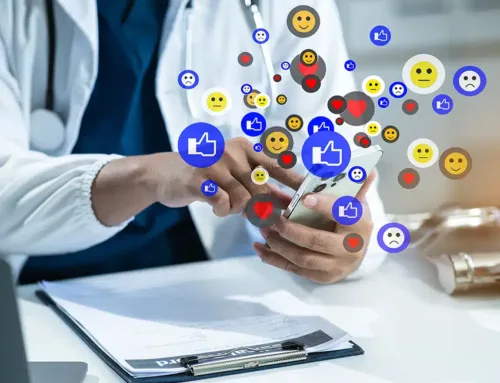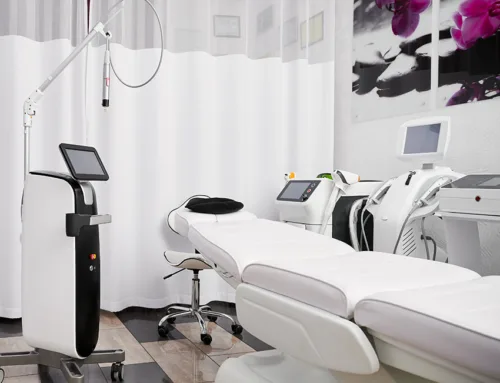Guide to Healthcare Digital Marketing
How can healthcare providers maximize their digital advertising efforts to enhance patient engagement? This article simplifies complexities and outlines effective strategies, from SEO to personalized communication. Gain valuable insights into building a stronger digital presence within the healthcare industry’s unique regulatory framework. Empower your outreach with practical digital healthcare advertising approaches, tailored for the dynamic world of healthcare marketing.
Key Takeaways
- Digital advertising in healthcare is vital for connecting with today’s tech-savvy patients. It emphasizes personalized patient experiences, smart data usage, and interactive communication channels like social media, email, and SMS.
- Digital marketing in healthcare is both cost-effective and impactful, allowing organizations to directly reach highly targeted audiences. A dynamic content strategy, robust SEO, and mobile-friendly designs are essential components of a successful healthcare digital marketing campaign.
- Healthcare digital marketing must adhere to legal and ethical standards like HIPAA regulations for patient privacy. Future trends include the integration of AI to personalize communications, multi-channel marketing for a seamless experience, and innovative methods like video and virtual reality to improve patient engagement.
Understanding Healthcare Digital Advertising
In today’s era of increased digital engagement, healthcare digital advertising plays a critical role in connecting with patients across various online platforms. Engaging patients involves creating deeply personalized experiences that shape their perceptions of healthcare providers and services.
The recent pandemic accelerated the need for digital innovation across sectors, including healthcare services. Consequently, strategies for healthcare digital marketing have evolved to emphasize transparency and establish bidirectional communication channels between consumers and providers.
The use and analysis of data (within the bounds of relevant regulations) plays an essential role in defining these enhanced outreach efforts as it provides actionable insights that can be used to shape interactions with patients more precisely. Building relationships through customized experiences on different platforms such as social media networks, email campaigns, or text messaging systems is key to effective patient-centric marketing in today’s digitally oriented world.
Benefits of Digital Advertising in Healthcare
Digital marketing offers greater cost-efficiency compared to traditional channels in the healthcare sector. It makes a stronger impact and yields better returns on investment for healthcare professionals. By bypassing conventional methods, organizations can connect directly with consumers, leading to more streamlined marketing operations.
Digital advertising excels in:
- Swiftly reaching specific audience segments.
- Heightening the success rate of health-related communications.
- Ensuring precise timing and targeting when delivering relevant messages.
With more patients turning to online platforms, it’s crucial for healthcare entities to harness digital tools like social media. These platforms are interactive and affordable, improving patient interactions, fostering engagement and education, building trust between patients and healthcare providers, and transforming both patient care delivery and communication processes within healthcare marketing.
Essential Components of Healthcare Digital Advertising
Driving healthcare digital marketing forward necessitates a robust content strategy as one of the primary digital marketing strategies. Delivering relevant and high-quality content enables healthcare organizations to engage their target audience and foster return visits.
Search Engine Optimization (SEO)
For healthcare digital advertising, search engine optimization (SEO) is indispensable. SEO ensures websites appear prominently in relevant searches, facilitating potential patients in finding the healthcare services they need.
Mobile-Friendly Experience
A mobile-friendly digital experience is crucial, considering many patients utilize smartphones for healthcare research and communication. Optimizing web pages for mobile search and browsing entails prioritizing dynamic design and maintaining fast load times for seamless mobile navigation.
Search Engine Marketing (SEM)
Search Engine Marketing (SEM) serves as a powerful tool to elevate healthcare providers’ online presence. By effectively using SEM, healthcare providers can increase patient inquiries and preferences, leading to a higher patient acquisition rate.
Search engines play a significant role in guiding users to hospital websites. In fact, they drive three times as many visitors as other sources, highlighting the effectiveness of SEM in attracting potential patients.
Search Engine Optimization (SEO) is an integral strategy in SEM. It makes the website more visible to users who are searching for healthcare services online, thereby attracting more prospective patients and enhancing the online reputation of the healthcare provider.
Social Media Advertising
Digital advertising has transformed healthcare marketing by offering innovative ways to engage with target audiences. Leveraging online platforms such as social media enables healthcare marketers to precisely target specific demographics based on factors like age, location, and interests. This targeted approach ensures advertisements reach the most relevant audience, maximizing the impact of marketing campaigns.
Advertising on social media enables healthcare organizations to:
- Establish and deepen connections with their audience, which isn’t achievable through traditional marketing channels.
- Enhance relationships with patients for better health outcomes.
- Advance the overall quality of healthcare services provided.
Within digital marketing, engagement encompasses more than just patient communication. It extends to:
- Providing support for medical professionals.
- Contributing to improvements in community-wide health metrics.
- Involving oneself in public health conversations online.
- Creating professional networks.
- Disseminating valuable healthcare information.
When these initiatives are carried out successfully, they contribute to online healthcare advertising and cultivate a robust community centered around patients.
Incorporating paid social media advertising intensifies the impact of digital marketing efforts. Through precise targeting capabilities, allow healthcare providers not only to reestablish but also personalize interactions with both current patrons and prospective ones significantly more efficiently.
Display and Banner Ads
In the realm of digital marketing, display and banner advertisements play a crucial role in capturing the interest of potential patients and establishing brand recognition. They serve as visual attractions and interactive features that entice audiences to explore what healthcare providers have to offer. These ads are essential for directing visitors toward healthcare websites, facilitating not only the acquisition of new patients but also the maintenance of connections with current ones. With captivating ads prompting clicks, there’s a likely increase in website visits, potentially translating into more scheduled appointments.
Display and banner advertising form an integral piece of a well-rounded digital marketing strategy. When combined with other elements like SEO and social media marketing efforts, they ensure a unified and potent approach toward reaching desired patient populations.
Personalization in Healthcare Digital Advertising
In today’s healthcare sector, personalized marketing is not just a preference but a necessity. Modern healthcare consumers prefer brands that deliver tailored interactions, and this expectation extends to healthcare marketing efforts. It’s imperative that marketers in this sector adjust their strategies to meet the increasing demand for individualized experiences.
The benefits of personalization include:
- Bolstering patient trust
- Amplifying brand engagement
- Enhancing conversion rates
Achieving personalization involves creating communication that resonates on an individual level with patients, leveraging detailed consumer profiles, extensive patient data, and analytical insights for fine-tuned marketing campaigns.
Healthcare entities often leverage email marketing as an effective tool for delivering personalized messages. By providing up-to-date information directly into their inbox, healthcare organizations can spark immediate interaction with consumers while nurturing enduring connections between them and their patients.
Measuring the Success of Healthcare Digital Advertising Campaigns
To evaluate the effectiveness of healthcare digital marketing initiatives, monitoring several critical indicators is essential:
- Conversion rates: The rate at which viewers take a desired action.
- Marketing Qualified Leads (MQLs): Leads more likely to become customers due to their interaction with marketing efforts.
- Return on Investment (ROI): The efficiency of investment against gains made from advertising campaigns.
- Customer Acquisition Cost (CAC): The expense incurred in acquiring new customers.
- Customer Lifetime Value (CLV): Predicted revenue generated from a customer throughout their relationship with the company.
Utilizing sophisticated analytical tools and practices is key for optimizing content plans and enhancing the performance of these campaigns. Additional metrics like traffic flow toward websites, user activity online, volume of blog visits, and interactions across various social media platforms provide valuable insights into how healthcare marketing strategies influence consumer behavior, allowing for better customization of patient experiences within the healthcare framework.
Legal and Ethical Considerations in Healthcare Digital Advertising
The Health Insurance Portability and Accountability Act (HIPAA) establishes legal and ethical norms for healthcare digital marketing, ensuring secure communications with patients and compliance with regulatory standards. Healthcare organizations must allocate resources to marketing technologies meeting HIPAA requirements, engage with compliant technology vendors, and utilize platforms capable of automating digital marketing efforts while adhering to regulations.
Tips for Successful Healthcare Digital Advertising
Digital advertising in the healthcare sector should go beyond merely applying methods and strategies. It must be conducted with a strong ethical framework. Ethical marketing for healthcare marketers means creating advertisements that are truthful, non-misleading, and show respect for fellow professionals.
With the widespread use of smartphones for seeking health-related information and correspondence, making sure that healthcare websites are optimized for mobile devices is essential. A site that’s user-friendly on mobile platforms can improve patient experience significantly while also boosting web traffic.
Email marketing offers an efficient and customized avenue to reach out to patients. Healthcare organizations benefit from this by sending pertinent news and updates directly to their patients’ email accounts, enabling instantaneous interaction and sustaining a robust connection between patient and provider.
Future Trends in Healthcare Digital Advertising
The landscape of digital marketing in the healthcare sector is set to undergo an exciting transformation. One significant advancement on the horizon involves leveraging artificial intelligence, which holds the promise to revolutionize patient communication by utilizing analyzed patient data for crafting marketing messages that are both engaging and highly tailored.
There’s a shift towards integrated multi-channel marketing strategies within healthcare organizations. This approach aims at delivering consistent messaging across diverse platforms and devices. Thereby, offering patients a unified brand experience no matter their point of contact with health systems or healthcare marketers.
We’re witnessing an emergence of video content and virtual reality as compelling avenues through which existing and potential patients can engage with healthcare services. The innovative applications include:
- Conducting video consultations with medical professionals.
- Utilizing virtual reality techniques for managing pain and mental well-being.
- Providing interactive educational materials aimed at enhancing patient knowledge and skillset.
These technological advancements not only elevate levels of engagement among patients but also provide them with more deeply immersive interactions during their encounters within the sphere of modern healthcare provision.
Summary
Digital advertising holds immense potential to revolutionize the healthcare industry, offering a powerful tool for expanding and enhancing patient engagement. We have delved into the myriad advantages digital ads provide, dissected their essential components, and assessed their effectiveness. As we look ahead, promising innovations such as AI-led customization, diversified channel marketing strategies, and immersive virtual reality encounters beckon. It is important to note that personalization tailored respectfully within ethical boundaries coupled with agile responses to evolving trends and patient dynamics are central tenets for mastering healthcare digital advertising success.









